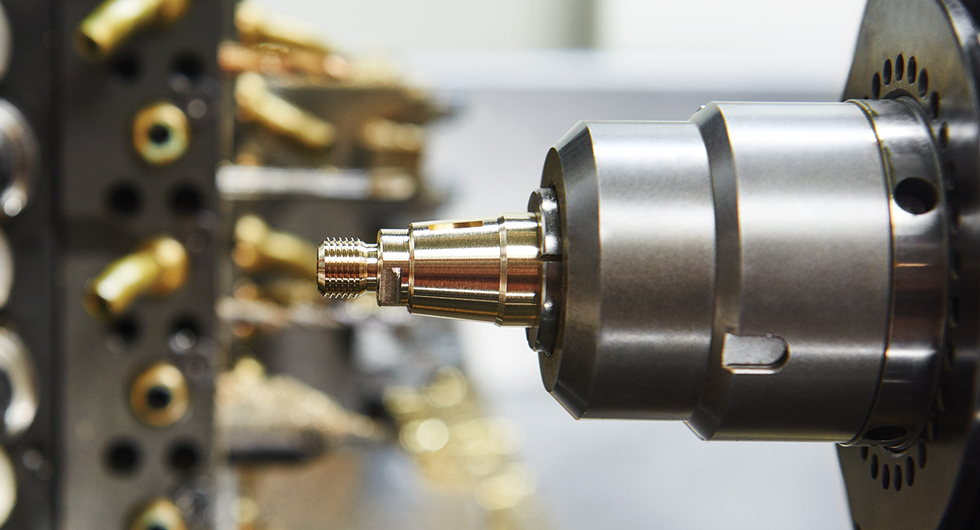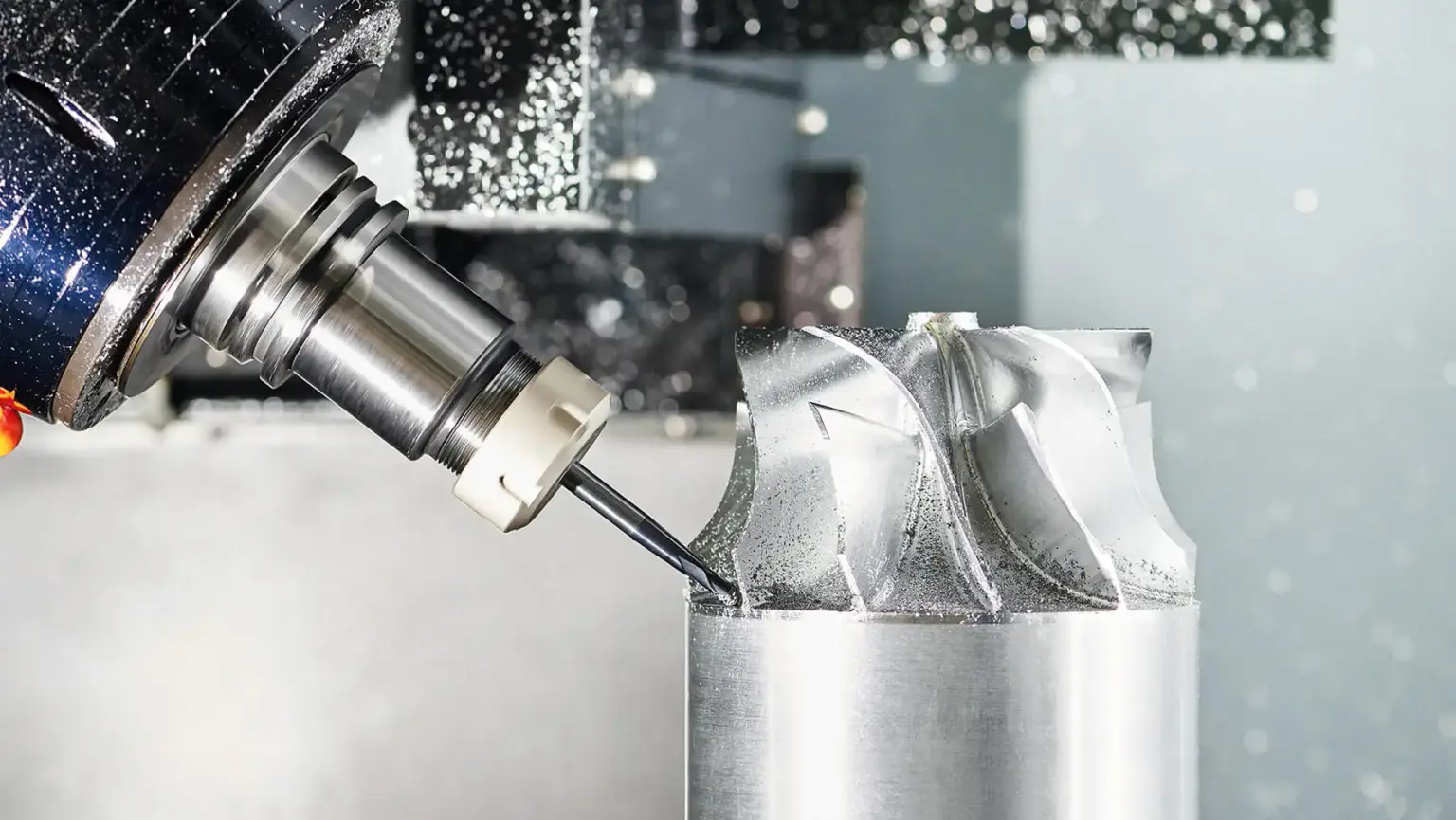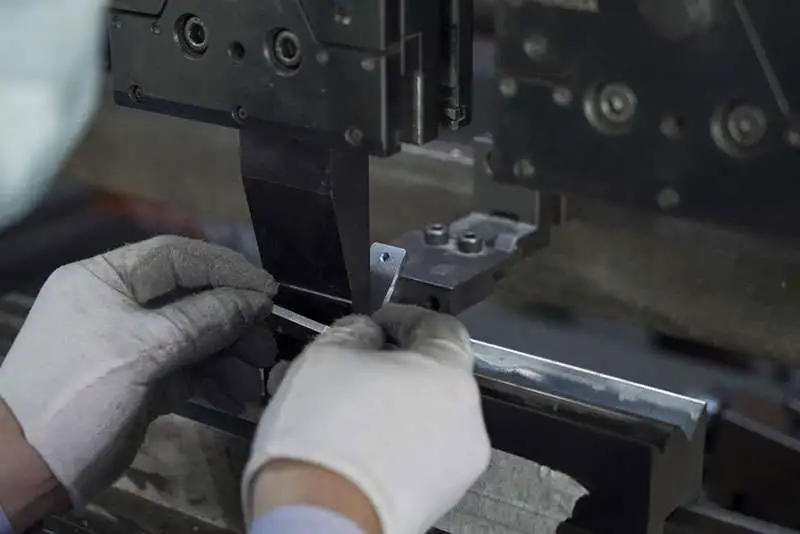Enhance CNC efficiency with optimized tooling, advanced software, and skilled operators for streamlined operations.
Optimize Coolant Usage
Coolant provides several benefits in the CNC machining process, such as removing chips from the workpiece, reducing cutter temperature and wear. To maximize the coolant efficiency, the following techniques may be applied.
Maximizing Coolant Flow
The coolant flow rate is among the primary aspects of its efficiency since it determines both the rate at which the chips are removed from the cutting zone and the temperature at which the cutters work. It is recommended to strive for the flow rates ranging from 5-20 liters per minute depending on the specificity of the endmill and cutting depth. It would be beneficial to maintain and upgrade the high-quality coolant pumps to ensure that the flow rates are always within the optimal range, and keep the coolant delivery system periodically checked for blockages in order to avoid disregulation.
Proper Coolant Selection
The coolant must be selected carefully depending on the specifics of the material being cut and the nature of the machining process. Among the features that should be considered are the physical properties of the material-cutting coolant interaction, lubricating ability, corrosion resistance, and biodegradability. For instance, water-dispersible coolants are primarily well-suited for the aluminum machining, while the oil-based coolants are the best option for the work involving the steel. It would be reasonable to consult the experts on the coolant supplier side to understand the best option for a particular machining process.
Adjust Coolant Pressure
The coolant pressure should be regulated to ensure the optimal cooling effect on the cutters and the workpiece at the same time effectively removing chips from the cutting zone. The optimal coolant pressures vary depending on the material, the cutting conditions, and the type of cutters from 25-1000 psi. Trial-and-error may be necessary to maintain the optimal coolant pressure.
Utilizing T h rough-Spindle Coolant
The through-spindle coolant system delivers the coolant right to the cutting surface reducing the impact of the high temperature reached during the extremely high-speed endmill spinning due to friction . It ensures maximal efficiency regarding the cutter lifespan and the quality of the workpiece surface, and the risk of the workpiece material damage due to overheating. It maybe wise to invest in the CNC equipment with through-spindle cooling are sell the older ones with the traditional systems to purchase new machines.
Coolant Filtration Systems
The coolant should be filtered effectively to avoid the wear of the cutting tools and the invariability of the machining quality.
Overall, the system of the filtration should be high-quality to remove all of the chips and dusts from the cooler reservoir. The current state of filtration efficiency should always be periodically checked, and the replaceable elements such as filters should be replaced before the filtration has become ineffective due to being clogged, as well as other methods may be implemented like a magnetic or a centrifugal separator. Finally, it may be wise to control the level of the coolant in the reservoir, the efficiency of the liquid coolant circulation through the endmill cleaning the tubes and other elements of the coolant delivering system that may become clogged or obturated by debris or mechanical coolant element wear.
Strategic Cooling
Finally, the coolant should be distributed throughout the cutting zone strategically to minimize the wasteful emission or dispersion, as well as it may be wise to give preference to the general stratagem of modes, for instance, the cooling must be filed through the flood cooling regimes to cool the endmill as fast as possible during the grooving or other heavy-operation processes. If the smooth operation at excellently detailed surface finish is required, then the precise target endmill lubrication and cooling must be applied in a mist regime. The cooling nozzles must be regulated by the close attention of the specialists of the machine-operating staff.

Implement Ramp Cutting Technology
The ramp cutting technology brings a revolution in CNC machining, providing substantial efficiency improvements.
Maximizing the Material Engagement
Ramp cutting works by keeping the tool in contact with the material during the whole machining duration. Compared to other methods when the tool needs to be retracted frequently, the ramp cutting allows keeping the tool engaged and reducing the machining time. Namely, as the depth of the cut increases over a spiral or helical path, the tool always remains in contact with the material, reducing the retractions time, and cutting the time spent on air.
Reducing the Tool Wear
Since the tool remains in contact with the material, the tool also wears out slower. When using previous conventional methods or even 3D cutting, the number of the required retraction of the tool is increased, leading to its diminished life expectancy and faster wearing mining. Thus, in the case of cutting hard materials or conducting a very long figures production run, the ramp cutting provides a solution.
Improving the Surface Quality
As the cutting tool retracts from the target path, it may leave a mark on the material surface, reducing the overall quality of the cut. On the contrary, with the ramp cutting, the transition of cutting is smooth along with the seamless spiral path. This reduces the probability of tool marks, improving the overall surface quality of parts.
Optimizing the Chip Evacuation
Another problem with frequent retraction of the cutting tool is the difficulty of moving the chips away from the cutting area. If they accumulate and reenter the cutting area, the chip recutting may be harmful to the cutting tool. On the other hand, a constant retraction of the tool and the continuous keeping it in contact with the material allows for the timely removal and movement of the chips away.
Reducing the Machine Downtime
The ramp cutting also brings benefit to machine time. Rapid retraction of the tool may require cleaning after each CT pass or movement of the workpiece. It also needs continuous pause on retraction and push back the cutting tool to its target area. Not only does this take more time on its own, but it also reduces the machine capacity because the time when the machine is running and not just waiting is significantly reduced. Overall, the ramp cutting technology provides a holistic approach to improving the CNC machining efficiency.
Use Smoothing Functions
Smoothing functions play an important role in CNC machining and offer several advantages for increasing efficiency.
Quality of Surface Finish
CNC machines can benefit from the increased surface finish quality that can be achieved by applying a smoothing function, such as PerfectCut. The jagged edges and any irregularities can be eliminated, and the machined surfaces can be made extremely smooth and precise.
Machining Time
Optimization of toolpaths, made possible by smoothing functions, results in fewer unnecessary moves, reducing rapid changes of direction that can be associated with some types of toolpaths. This can significantly reduce milling or machining time, as there are fewer unnecessary moves, enabling faster production cycles and higher throughput.
Tool Life
In addition to a faster machining process, smoothing functions smooth out the toolpath, reducing the wear of the tools. This results in extended tool life and less frequent need to replace cutting tools, as there is less wear and tear associated with the machining operations.
Accuracy and Consistency
Tool motions can be smooth and linear as they move through their programmed toolpath, ensuring a consistent engagement of the tool with the workpiece. The results can also be more consistent, reducing the variation that can be found in different machined surfaces and in the parts manufactured, leading to accurate or repeatable results.
Machine Dynamics
Smoothing functions, when applied in conjunction with the right settings, make sure that they control the velocity of the moves through significant changes in speed and direction. The machine will not undergo as many accelerations and decelerations, and this is also better for the machine’s dynamic response, making smoother moves that can be made at higher speed. Both the acceleration forces, and the forces applied by the machine’s servomotors and are equally applied, providing significant advantages on overall performance.
Programming
Smoothing functions are easy to apply, and they can be applied even to the most complex toolpaths, often by checking a box, as can be seen in Figure 5. This results in reduced programming times..
Adjust Dynamic Settings
Optimization of dynamic settings is among the key factors to increasing the efficiency of CNC machining. It results in considerable improvements in performance and productivity.
Maximizing the Cutting Speed
One of the most significant benefits of improved dynamic settings is that cutting speed can be enhanced to the maximum while preserving optimal physical machining parameters. The changes in acceleration and deceleration during dynamic machining allow CNC machines to implement the maximum traverse and cutting speeds while also ensuring significant performance gains.
Minimizing Downtime
Dynamic setting optimization may lead to reduced machine downtime, especially with the help of decreasing or even preventing the stops and starts that happen when transitioning from one toolpath to another. Other outcomes of these changes are smoother machining motion profiles and quicker toolchanges that enhance the utilization of the machine and, therefore, increase the overall throughput and productivity.
Enhanced Surface Finish
Optimization of dynamic settings is also vital for improved surface finish, as it decreases vibration and deflection during machining. Improved surface finish may be attributed to proper adjustment of acceleration and jerk. The changes in dynamic settings ensure that the acceleration of the tool is smoother, resulting in parts with a better surface finish.
Increased Tool Life
Dynamic settings optimization is also beneficial because it assures longer tool life due to reduced mechanical stress on the cutting tools caused by the changes in momentum. Acceleration and deceleration profiles are among the most critical factors that must be optimized.
Precision of Machining
Proper dynamic tooling settings also facilitate increased machined part accuracy, as they help eliminate the errors resulting from vibrations and resonance in the machine. Of the many changes in dynamic settings, the enhancements of acceleration, jerk, and velocity are the main contributors to the higher overall accuracy. The tolerance capacity of machined components also enhances the dimensional precision of the parts.
Easier CNC Programming Workflows
In addition, these changes simplify CNC programming because the settings for various machining processes are standardized. Parameters may be established differently depending on the kind of part, and the CNC machine may be programmed to utilize the standard predefined settings for dynamic machining, reducing setup time for programmers.

Minimize Retract Height
Minimizing retract height serves as a primary strategy to optimize the efficiency of CNC machining, yielding tangible benefits in the form of reduced cycle time and higher overall productivity.
Allows for Maximum Machining Efficiency
Minimizing retract height means a tool covers the least possible distance during its retraction and concomitant return to the workpiece. Thus, this type of geometry reduces the cycle time and allows for greater use of the spindle. By reducing the number of unnecessary retractions during the machining process, CNC machines can produce machined details in a more efficient manner, hence improving the throughput rate and reducing production costs.
Improved Surface Finish
By minimizing retract height, the tool achieves a higher degree of constant and consistent workpiece engagement. Such geometry also implies a significantly reduced impact or drag forces when a tool retracts, further reducing the risks of tool marks or imperfections in the machined part. As a result, manufacturers will not need to spend time on subsequent processing of machined parts to meet offered quality promises.
Longer Tool Life
Smaller retract height implies less tool movement, thus reducing the wear imposed on the cutting tool and prolonging its economic lifecycle. Minimizing the incarnating distance also minimizes the mechanical stresses associated with the tools’ retraction, hence resulting in fewer mechanical failures and the ability to employ a single tool to mill larger batches of components.
Optimized Chip Evacuation
Minimizing the retract height implies reducing the distance the chips need to travel to exit the played. It also reduces the erase between the workpiece or fixture and the tool. Thus, chipping and cooling nozzles can be positioned very close to the contact area between the tool and the workpiece, allowing for more efficient chip removal. The minimized space between the nozzles will minimize the risk of chips being thrown back in the interstice resulting in re-chipping and increasing dynamic factors that could cause tools to break. Therefore, greater throughputs result from fewer interrupted milling operations.
Minimizing retract height serves as a quintessential strategy to improve CNC machining efficiency, with benefits such as increased milling efficiency, part surface finish, tool longevity, increased brush throughput, streamlined manufacturing, and higher overall efficiency. Manufacturers can ensure substantial improvements in CNC machining efficiency and profitability as a result of a successful implementation of this strategy.

Effective Use of Organizational Tools
Organizational tools are essential for maximizing CNC machining efficiency. They offer several benefits for streamlining the workflow and ensuring improvements in terms of productivity.
Maximizing Tool Efficiency
Organizational tools, such as holders, racks, and trays for tools, allow operators to keep tools in order. When tools are stored in designated places in a given order, operators can find the right tool for each job easily. This capability eliminates the time for setting up the necessary tools and maximizes the utilization of existing tools.
Streamlining Changeovers
When tools are stored in an appropriate order and in correlation with the demands for particular jobs, organizational tools streamline the process of changeovers. Switching from one machining operation to another becomes easy because operators can simply retrieve the tools necessary for the new machining operation. As a result, the downtime between machining operations is minimized, while the uptime of machines is maximized.
Whole Workflow Improvements
Organizational tools create a more organized workflow that is more easily understandable. Implementing storage for fabricated parts, raw stock, and bins in the form of shelving or carts allows operators to know where they have to be placed. It helps to reduce the possibility of accidents and mitigate risks as operations and removing tools are made easier.
Inventory Management
Organizational tools help to manage inventories of both tooling and materials. Organizing tools and materials also involves controlling their usage by developing tracking systems and labels for tools. It ensures that the organization is able to track the levels of materials and tooling available to avoid bottlenecks and stockouts.
Overall Efficiency
In conclusion, the use of organizational tools is crucial in maximizing machining efficiency. The benefits of these tools include the maximization of tool efficiency, the streamlining of tool changeovers, workflow optimization, reduced occupational safety risks, improved inventory management, and overall productivity.








